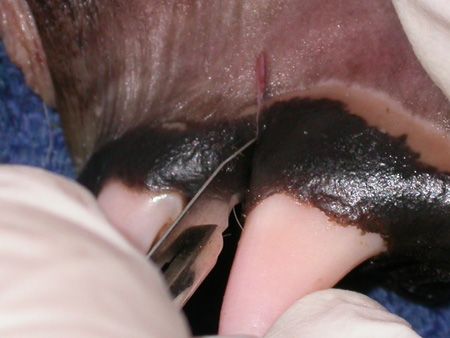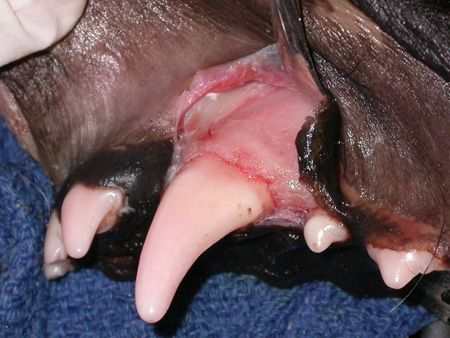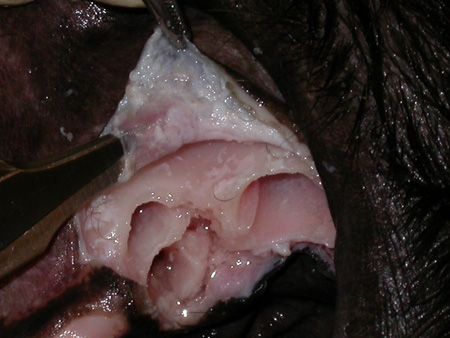Taking the bite out of tooth extractions
The old string around the tooth trick won't work with your veterinary patients. But here are some tips to help you slam the door on your fears of tooth extraction.

(Getty Images)Let's be honest, extracting teeth does not send too many veterinarians in general practice leaping for joy. However, these practical tips from a presentation on dental extractions at CVC Virginia Beach by Matthew Lemmons, DVM, DAVDC, a veterinary dentist at MedVet Indianapolis, may take away some of your trepidation when excavating the oral cavity.
An oral overview
The indications for dental extraction are:
- Periodontal disease
- Fractured teeth
- Tooth resorption
- Treatment of malocclusion
Although the oral epithelium is very forgiving compared with other tissues, Dr. Lemmon says to go into a dental extraction with the following goals in mind:
- Remove all dental tissue, including all of the tooth root.
- Cause as little trauma as possible.
- Be sure to be easy with soft tissue handling.
- Oppose soft tissue tension-free so it heals quickly.
Those tenacious mandibular canine tooth extractions!

Watch this video for Dr. Lemmons' advice on removing these particularly tricky teeth.
What tools you need
The proper instruments are important to gain access to various sites in the mouth to help ensure the best outcome. Dr. Lemmons recommends using sharp periosteal elevators to get in between the bone and gingiva, sharp scissors to trim flaps, and smaller needle drivers for suturing flaps closed in the smaller spaces of the mouth. A variety of dental luxators and elevators is needed, and these instruments should be kept sharp. Water cooled, high-speed dental burs are necessary for removing alveolar bone and sectioning teeth.
Simple vs. surgical extraction
Dental extractions are divided into two broad classes: simple and surgical. Simple extractions do not involve opening up a flap or removing bone. With these types of extractions, you essentially loosen the tooth, elevate it out of the alveolus, and close the gingiva. Simple extractions work well for the incisors (except for the maxillary third incisors), first premolars and mandibular third molars, Dr. Lemmons says.
With surgical extractions, you need to create a flap. Dr. Lemmons often uses an envelope flap for extraction of two-rooted premolars and molars, which involves pulling the gingiva away from the tooth. For extraction of canine teeth and maxillary fourth premolars, a three-cornered flap can be used (Figures 1 and 2).


Figures 1 and 2. The development of a three-cornered flap. (Photos courtesy of Dr. Matthew Lemmons)To create flaps, there are a few incisions you need to be aware, says Dr. Lemmons. The gingival releasing incision detaches the attached gingiva from the tooth (Figure 3). To make this incision, direct a No. 15 blade to the bone and push the blade 1 or 2 mm deep while directing the blade to the tooth, being sure not to skewer the flap.

Figure 3. A periosteal-releasing incision. (Photo courtesy of Dr. Matthew Lemmons)“The periosteal-releasing incision is key to any oral surgery,” says Dr. Lemmons. For this incision, put the scissors between the periosteum on one side and mucosa on the other and then undermine and dissect. Be sure to only cut the periosteum, leaving mucosa intact.
Do I need to obtain a dental radiograph when doing a tooth extraction?
If you aren't using dental radiography, are you starting to be on legally shaky ground? We asked the AVMA PLIT, and they said just 3 to 4 percent of claims annually are for dental-related professional liability claims, but that the defense of any liability case is often more difficult without diagnostics. Veterinary dentist Dr. Heidi Lobprise thinks the consequences of not using this now considered gold standard for veterinary dental care could be foreboding. Hear about it here.
Precautions and complications
Dr. Lemmons is adamant that multirooted teeth must be sectioned every time. You never remove a tooth whole. For canine and carnassial teeth, he says to remove buccal bone to create a window to get the tooth out.
Complications of tooth extraction include:
- Fractured roots
- Dehiscence, which can lead to an oronasal fistula
- Iatrogenic trauma such as jaw fracture and orbital penetration
- Malocclusion
To ensure rough edges of bone are smoothed down, Dr. Lemmons uses a diamond bur. And he always recommends obtaining radiographs before and after each tooth extraction for surgical planning and to ensure the whole root and tooth are out.
A few tooth extraction particulars
Dr. Lemmons has some practical tips for four major teeth that are commonly extracted.
Maxillary canine. When extracting the maxillary canine, Dr. Lemmons always creates a mucoperiosteal flap, which closes the extraction site to prevent an oronasal fistula. In cases of single extractions, Dr. Lemmons uses a simple interrupted pattern with 4-0 polyglicaprone 25 (Monocryl-Ethicon) suture for dogs and 5-0 polyglicaprone 25 suture for cats.
Maxillary fourth premolar. Dr. Lemmons uses one vertical incision instead of two and says to release horizontally off the first molar to maintain gingiva all the way around the first molar. He prefers to maintain a collar gingiva around teeth adjacent to extractions.
Mandibular canine. Dr. Lemmons uses two vertical releases with the mandibular canine. He always identifies the middle mental foramen to prevent cutting it, and he recommends to always close the labial frenulum first. If you are removing this tooth in a dog with heavy jowls such as a boxer, pit bull or bulldog, Dr. Lemmons recommends putting in a horizontal mattress suture to relieve some tension on flap.
Mandibular first molar. Dr. Lemmons uses an approach similar to the maxillary fourth premolar. He recommends removing adequate bone to get the root out, as the bone is thicker in this area than with the fourth premolar.
Dr. Meghan E. Burns owns Connect Veterinary Consulting. Her expertise includes marketing, product and business development, key opinion leader management, and medical writing. http://www.connectveterinaryconsulting.com